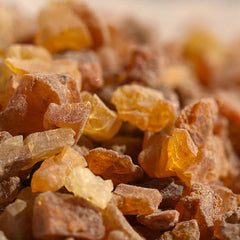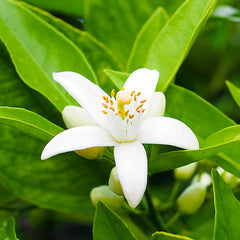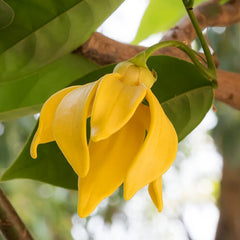What Flowers Are Used in Floral Perfumes?
Click For Affordable Inspired Perfume Alternatives
Floral perfumes have captivated fragrance enthusiasts for centuries, celebrated for their elegance, freshness, and enchanting aroma. The beauty of these scents lies in their natural origins—primarily the exquisite flowers from which their essential oils and extracts are derived. Each flower contributes its unique character, creating a diverse palette of fragrances that range from delicate and light to rich and opulent. Whether used as the main note or as part of a complex blend, flowers remain the heart of many popular perfumes. Understanding which flowers are used in floral perfumes can deepen your appreciation for these luxurious scents and help you choose fragrances that resonate with your personal style.
What Flowers Are Used in Floral Perfumes?
Common Flowers Found in Floral Perfumes
Many flowers have become staples in the world of perfumery due to their distinct aromas and versatility. Here are some of the most popular flowers used in creating floral perfumes:
- Rose – The queen of flowers in perfumery, roses offer a romantic, lush, and timeless scent. Varieties like Damask and Centifolia are especially prized for their rich aroma.
- Jasmine – Known for its exotic, sweet, and intoxicating fragrance, jasmine adds sensuality and depth to floral compositions.
- Lavender – With its calming and herbaceous aroma, lavender is often used to add freshness and serenity to floral fragrances.
- Gardenia – This flower provides a creamy, white floral scent that is both elegant and soothing.
- Heliotrope – Known for its vanilla-like, sweet aroma, heliotrope offers a soft, powdery floral note.
- Ylang-Ylang – With a rich, sweet, and slightly fruity aroma, ylang-ylang adds exotic flair and sensuality.
- Magnolia – Offering a fresh, citrusy floral scent, magnolia brings brightness and elegance to perfumes.
- Violet – Known for its subtle, powdery, and slightly sweet aroma, violet adds a delicate touch.
- Orange Blossom (Neroli) – Derived from bitter orange flowers, neroli imparts a bright, citrusy floral scent that is both uplifting and sophisticated.
- Freesia – This flower offers a fresh, sweet, and slightly peppery scent, often used for a lively floral note.
How Flowers Are Used in Perfume Composition
Flowers contribute to perfumes in various ways, depending on how their essences are extracted and integrated into the fragrance. The main forms include:
- Essential Oils – Extracted through steam distillation or solvent extraction, essential oils capture the pure aroma of the flower.
- Absolute – A highly concentrated extract obtained through solvent extraction, often used for delicate flowers like jasmine and tuberose.
- Infusions and Tinctures – Flowers can be infused in alcohol to create floral infusions, which are then used in perfume formulations.
- Oleoresins – Concentrated resins that combine essential oil and concrete, used for richer floral notes.
Perfume composition often involves blending these floral extracts with other scent notes—such as woody, citrus, or musky accords—to create complex, harmonious fragrances. The prominence of a particular flower can define the overall character of the perfume, whether it’s a light floral bouquet or a deep, heady scent.
Unique Floral Notes and Their Characteristics
Some flowers have unique characteristics that make them especially desirable for perfumery:
- Rose – Symbol of love and romance, with notes ranging from fresh and dewy to rich and velvety.
- Jasmine – Adds sensuality, with warm, sweet, and slightly fruity undertones.
- Ylang-Ylang – Offers a tropical, exotic aroma with a hint of spice and honey.
- Neroli (Orange Blossom) – Bright, airy, and uplifting, often used as a top note for freshness.
- Gardenia – Creamy and velvety, evoking sophistication and elegance.
The choice of flower and extraction method greatly influence the final scent profile, allowing perfumers to craft a wide array of floral fragrances suited for different moods and occasions.
Emerging Trends in Floral Perfume Ingredients
While classic flowers remain staples, modern perfumers are exploring new floral ingredients and innovative extraction techniques:
- Novel Floral Sources – Flowers like osmanthus, tuberose, and frangipani are gaining popularity for their unique scents.
- Natural vs. Synthetic – While natural floral extracts are prized, synthetically recreated floral notes are also widely used to ensure consistency and sustainability.
- Layering and Blending – Combining multiple floral notes creates complex, multi-dimensional fragrances that evolve over time.
These trends reflect a desire for both authenticity and innovation in floral perfumery, opening new horizons for scent creation.
Conclusion: The Enduring Allure of Floral Flowers in Perfume
Flowers have long been the foundation of some of the most beloved perfumes in history. Their natural scents evoke emotions, memories, and sensations that resonate deeply with wearers. From the romantic rose and jasmine to the exotic ylang-ylang and vibrant neroli, each flower brings its own story and character to the world of fragrance. Understanding which flowers are used in floral perfumes not only enriches your appreciation for these scents but also guides you in selecting fragrances that match your personality and preferences. Whether you favor the timeless elegance of a rose-based perfume or the bright cheerfulness of orange blossom, floral scents continue to enchant and inspire, ensuring their place at the heart of perfumery for generations to come.
Buy Perfumes - Best Online Retailers
Click For Affordable Inspired Perfume Alternatives
Click For The Best Niche Perfumes & Decants
Pheromone Perfumes - Confidence, Attraction & Appeal - Click For More
Home Fragrances & Candle Warmers - Click To Scent Up Your Spaces Today!



